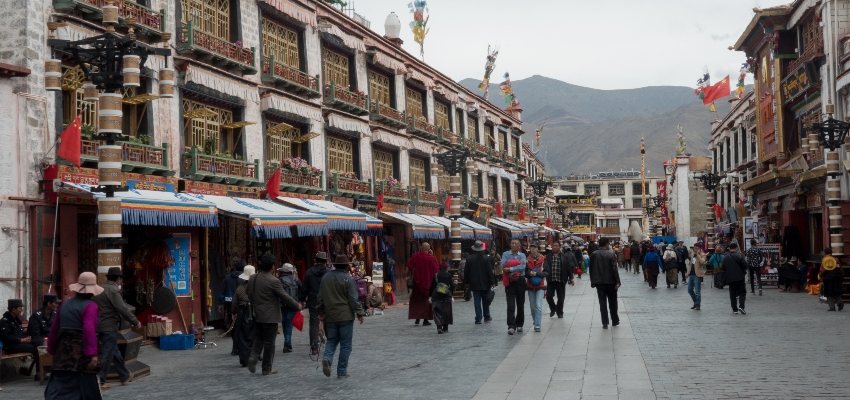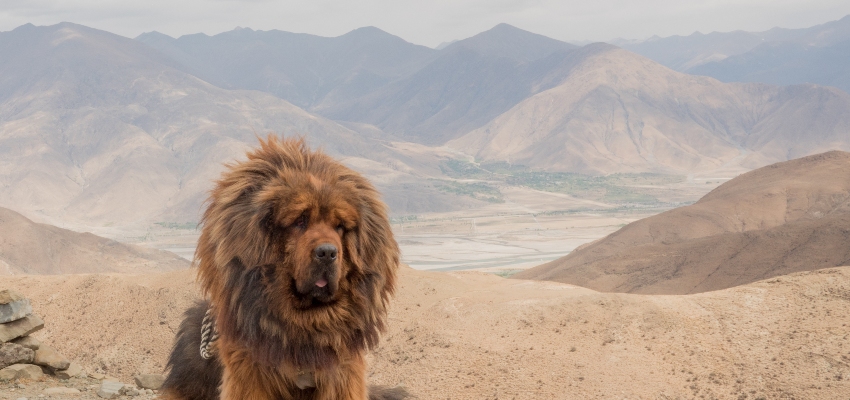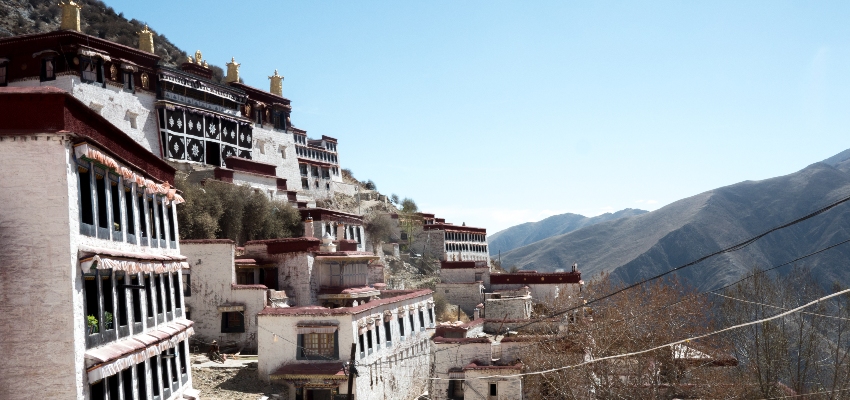All photos by AsiaTravel traveler Mar Pages
Whether you want to experience enlightenment, see awe-inspiring landscapes, or explore one of the tallest mountain ranges in the world, visiting Tibet has everything you need to help you check off bucket-list items. It’s fabled and mysterious presence has been calling travelers for eons, yet in spite of this, many people either show up unprepared or put off visiting altogether because it may seem a bit too difficult.
Well, let’s set the record straight. Traveling to Tibet can be very easy. We’ve debunked some of the most common myths to show you just how easy it is to have a fantastic time on the roof of the world.
Myth #1: It’s very difficult to get there

In reality, getting to Tibet is no more difficult than traveling to any other destination in China that isn’t Beijing, Shanghai, Chengdu, or Xi’an. In other words, anywhere that isn’t serviced by a direct and speedy bullet train. Sure, there are more permits required for non-Chinese citizens to enter Tibet, but none of that actually becomes much of a problem. To get into Tibet, all foreign visitors must travel with an approved agency (just like us!). So, when you book with an agency, all the daunting Tibet travel permits will be taken care of for you. Getting a permit is therefore just as simple as telling your agency that you want to travel to Tibet and they’ll make sure you have all the paperwork necessary. For those of you who plan on traveling to Tibet from outside of China, you must enter Tibet from Mainland China first.
As far as physically getting to Tibet, the country is more accessible than most people tend to believe. There are plenty of flights from Beijing, Shanghai, and Xi’an. Plus, for adventurous travelers looking to take the scenic route, the Qinghai-Tibet railway (which was once considered impossible to build for years) now offers an absolutely stunning ride.
Myth #2: You must travel with a group
 Despite the fact that most people do travel in groups to Tibet, this is not an actual requirement. The actual requirement is that tours must be arranged through an approved agency; however, it makes no difference if the agency is providing a private tour for one person or a group tour for 15.
Despite the fact that most people do travel in groups to Tibet, this is not an actual requirement. The actual requirement is that tours must be arranged through an approved agency; however, it makes no difference if the agency is providing a private tour for one person or a group tour for 15.
As with any decision, there are pros and cons for each style of travel. But, at the end of the day, whether you choose to travel by yourself or with a larger group comes down to your personal taste and how you’d like to experience Tibet. Although group tours allow you to share the cost of a private tour guide and bus, while also providing a bit of camaraderie, a private tour affords you the ability to move at your own pace, leaves space for spontaneity, and grants a more intimate experience with your local guide. The choice is all yours.
Myth #3: You can rush through Tibet in a few days

Many forget that altitude sickness affects people regardless of their physical fitness. (AsiaTravel employees included – some of the folks at Beijing HQ can tell you how they mistakenly thought it wouldn’t happen to them and were unpleasantly surprised.)
Generally speaking, you’ll need to give yourself at least a couple of days to adapt to the altitude and just relax. We’re serious about that last part – it’s not wise to push yourself physically during this period. While it is possible to do Lhasa in two full days, the Potala Palace has over 500 stairs to climb, so save this iconic destination for your second day. If you’re the type that doesn’t want to waste any time, make the most of your stay by leisurely exploring the Jokhang Temple or Norbulingka on the first day instead.
We recommend you take life at the speed of Tibetans. They’re laidback people who try to make a good time of everything they do, with an emphasis on good. Spending the first few days simply wandering and experiencing the local way of life is equally as important (or we might even argue more important) as visiting jaw-dropping sites.
On top of that, with so much to see and do, it’s quite difficult to make the most of your time in Tibet in just a few days.
Myth #4: Lhasa is the only place worth going to
 Since the capital is the most well-known part of Tibet (apart from Everest Base Camp), and has a variety of notable must-sees, we often hear that Lhasa is the only place worth exploring. But think about your own country or state: is the capital the only destination worthy of a visit? Probably not.
Since the capital is the most well-known part of Tibet (apart from Everest Base Camp), and has a variety of notable must-sees, we often hear that Lhasa is the only place worth exploring. But think about your own country or state: is the capital the only destination worthy of a visit? Probably not.
Although it requires more paperwork if you want to travel outside of Lhasa, this is also something that your agency (hello again!) will take care of behind the scenes for you. Cities, lakes, villages, mountains: there is so much to see outside of Lhasa that is just as beautiful and worth your time as the Potala Place and the Jokhang Temple.
How does camping beneath the stars on the banks of Manasarovar Lake sound? What about taking a bath in natural hot springs amid the barren landscape of Tirthapuri? From Tibet’s Holy Lakes, to Mount Kailash, to Tsedang – the birthplace of Tibetan civilization – there is so much to see throughout Tibet that even with the need for additional permits, exploring the depths of Tibet outside the capital is definitely a must-do on our bucket lists.
However, it is incredibly important to note that it’s quite difficult to visit temples outside of Lhasa if they’re not included in your pre-established itinerary. So keep this in mind when planning your trip, as changing your mind to go somewhere new mid-trip may not be possible.
Now that we’ve put those myths to rest once and for all, we hope your desire to travel to one of the most beautiful and spiritual places on the planet has been rekindled.
Believe us, it’s worth it.
